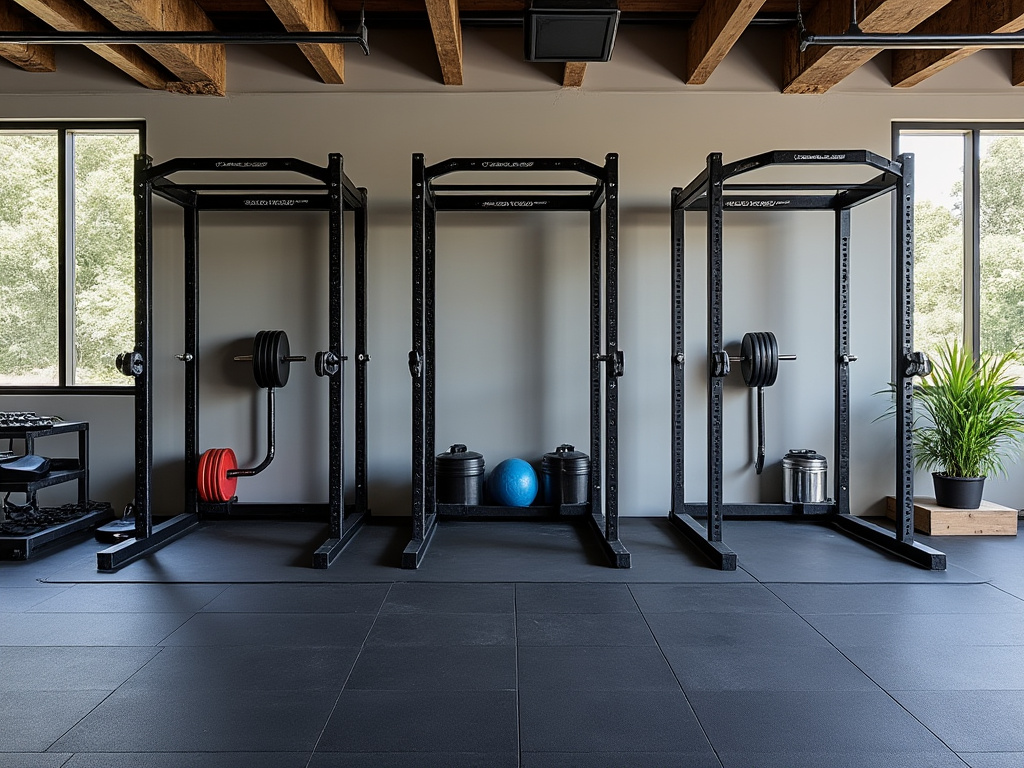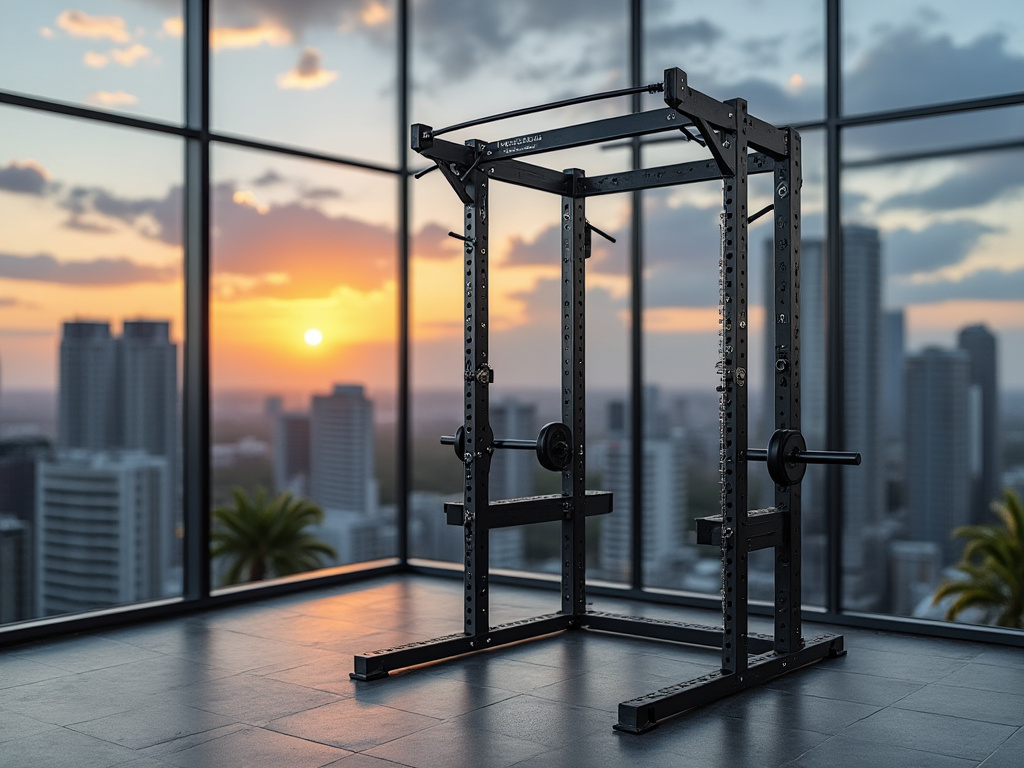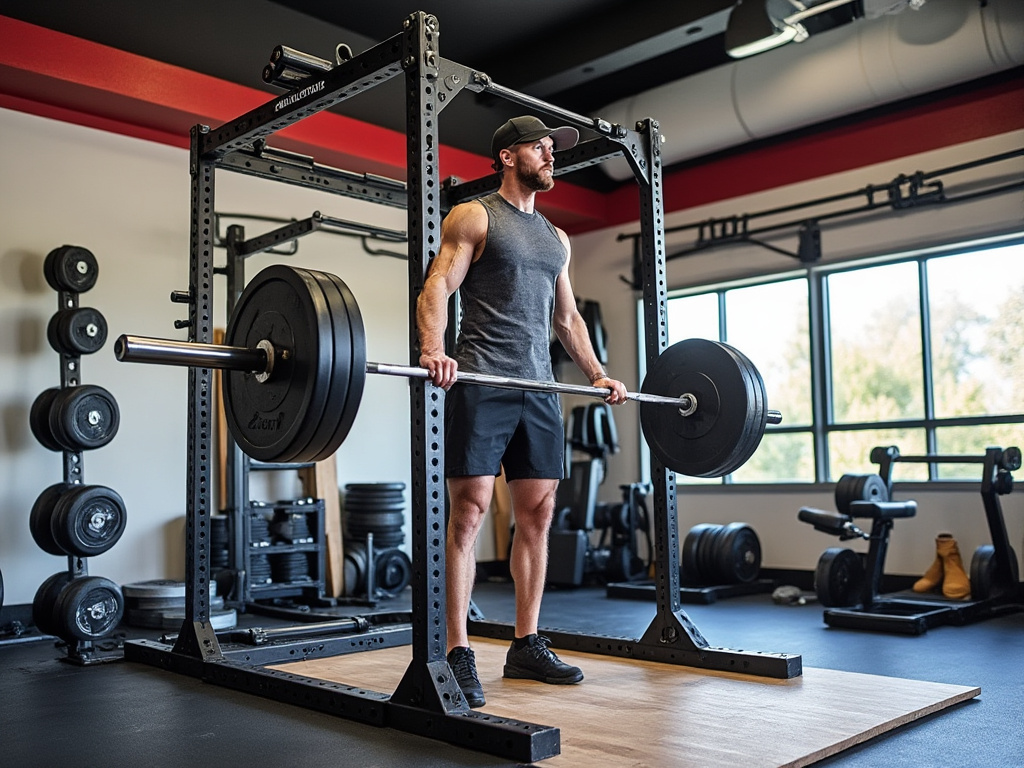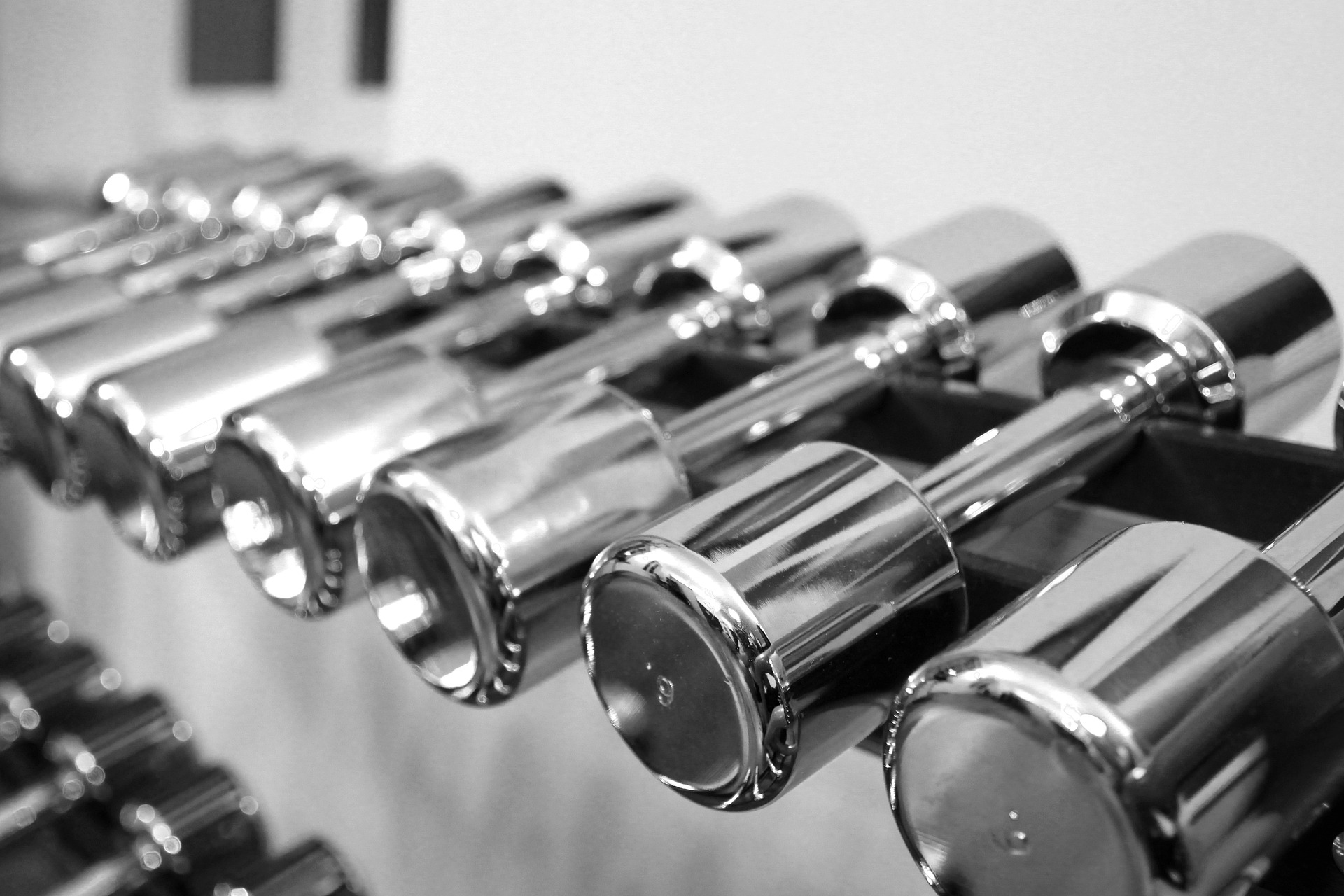In the age of home workouts, the quest for the ideal exercise equipment can be daunting. One piece of equipment often stands out as a must-have for serious fitness enthusiasts: the power rack. This versatile and robust structure can transform any space into a professional-grade gym.
Power racks, often regarded as the cornerstone of strength training, offer a multitude of benefits, making them a wise investment for those focused on building muscle and improving overall fitness. They combine safety, versatility, and a compact design, accommodating various exercises while ensuring the lifter’s safety during intense workouts.
In this article, we will explore the reasons why a power rack should be at the top of your list for home gym essentials. We will discuss its key features, review the top models of 2024, and provide practical tips on how to effectively incorporate one into your home workout routine.
Benefits of Using a Power Rack
Power racks are crucial for anyone looking to create a robust and safe home gym setup. These sturdy structures, often built from durable steel, feature four vertical posts that make them a centerpiece for strength training routines. Power racks are highly versatile, allowing you to perform a variety of exercises such as squats, bench presses, and pull-ups.
The enclosed design of a power rack ensures a safer lifting environment by containing the barbell, which is particularly beneficial when attempting heavy lifts without a spotter. This piece of equipment is designed to support hundreds of pounds, with adjustable-height safety bars that can be set according to the user’s preference, thus accommodating a range of body sizes and workout styles.
Choosing the right power rack involves assessing quality, space, and safety. For a home gym with limited space, modular racks or wall-mounted options are space-saving solutions. Meanwhile, in a commercial space or a dedicated garage gym, a larger model with an all-in-one trainer, complete with pulley systems and weight storage pegs, might be preferred.
A power rack is an investment in your fitness journey, offering a dependable and efficient way to enhance your training while ensuring your safety during each session.
Key Features to Look for in a Power Rack
When investing in a power rack for your home gym, there are several key features to consider that will ensure you receive the best value and functionality for your workouts. A quality power rack should combine versatility, durability, and the capacity for customization.
Versatility for Various Workouts
The principal appeal of a power rack is its ability to facilitate a range of strength-training exercises. An ideal power rack will have adjustable height settings for the safety bars, allowing users of varying heights to perform a diversity of movements such as squats, shoulder presses, bench presses, and shrugs. In addition, pins and hooks are critical for securing the barbell and weights, which can prevent accidents during workouts with vigorous movements. Some power racks elevate their versatility even further with integrated features like pulley systems, land mines, or smith machines. These additions not only expand the range of possible exercises but also bring more value to the power rack by creating a more comprehensive strength training station.
Safety Features for Safe Training
Safety is paramount in a power rack‘s design. Also known as a power cage, this equipment features four solid posts and, typically, horizontal safety bars that provide a secure framework for lifting weights. The ability to adjust safety bars’ height ensures that users can configure the power rack for safe performance of various exercises. Features such as safety straps or catch bars are essential in containing the barbell during failed lifts, especially important when training alone. For robust stability, some racks can be anchored to the ground, minimizing the risk of tipping during use. A solid power rack will have these and possibly other safety features, making it a reliable sanctuary for pushing limits in strength training.
Space Considerations and Design
While the benefits of a power rack are clear, the practicalities of installing one depend largely on the available workout space. Adequate floor space and ceiling height are key considerations; most power racks require approximately 10 square feet and a minimum ceiling height of 7-8 feet to safely perform overhead exercises and pull-ups. For those with limited space, compact models like the MIKOLO F4 offer essential functionality without a large footprint. Meanwhile, customization options such as added platforms, cable systems, or wall-mounted designs are also considerations that can maximize the usability of a power rack in a limited area. Careful measuring of your designated gym area prior to purchasing a rack can help ensure a good fit and avoid any inconvenient surprises. Some racks are designed to fit into spaces with less clearance, like the GPR400, which is an excellent option for those with shorter ceilings but still provides a full range of motion for effective strength training.

Top Power Racks of 2024
As strength training continues to be a staple in fitness regimens, the demand for reliable and versatile workout equipment remains high. In the year 2024, the market has seen a variety of power racks that cater to the diverse needs of fitness enthusiasts. These racks have been designed to hold up under the pressure of heavy Olympic Barbells, support complex pulley systems, and provide secure Weight Storage Pegs. Here, we explore the latest in power rack innovation for home gyms, garage gyms, and commercial spaces alike.
REP PR-4000 Power Rack Overview
The REP PR-4000 Power Rack is a standout piece of equipment in the power rack lineup this year, beginning at a competitive price of $799. It comes with a host of customization options, such as various depths and heights, to fit into diverse spaces and training regimens. The rack’s dimensions, 50.8″ W x 16″, 24″, 30″, or 41″ D x 80″ or 93″ H, make it a versatile choice for those with limited space. Constructed from durable 3″ x 3″ 11-gauge steel, it promises stability when loaded with hundreds of pounds. The REP PR-4000 boasts a 1,000 lbs weight capacity, sufficient for even the most ambitious strength workouts. Its hole pattern features standard 2″ spacing and includes 1″ Westside spacing in the bench press area, making it ideal for precise adjustment of safety bars and J-cups.
Major Fitness Power Rack Overview
[Section Missing]
Comparison of Budget-Friendly Options
Power racks come in a wide price range, making them accessible for both budget-conscious novices and affluent enthusiasts. When shopping on a budget, keep in mind that the most crucial factor is the piece of equipment’s quality and safety features rather than just its lowest price tag. While affordable, MIKOLO provides compact power racks that are designed to fit in smaller spaces without sacrificing functionality. These racks maintain a balance between affordability and the ability to perform a diverse array of exercises, from bench presses to pull-ups. It’s worth considering a power rack that not only aligns with your budget but also provides the flexibility to expand with additional attachments as your strength and skill grow.
High-End Models for Serious Lifters
For those who impose substantial demands on their workout equipment, high-end power racks serve as the best investment. Engineered from 3 x 3-inch, 11-gauge steel, these models can support up to 1000 pounds and endure the rigor of intense training sessions. These racks are often equipped with adjustable J-hooks, creating an optimal lifting experience catered to the user’s height and lift style. The addition of luxury features, such as lat pulldown kits, dip bars, and landmine attachments, suggest these units are tailored to a comprehensive strength training routine. Furthermore, high-end models may showcase premium elements, like laser-cut numbers for easy identification and Westside hole spacing, which are highly appreciated by seasoned lifters. An investment in these power racks is an investment in durability, safety, and the progression of one’s strength training ambitions.
Customizable Options and Accessories
In the world of home gyms, a quality power rack is a game-changer, providing the foundation for a variety of strength training routines. Beyond their fundamental features, power racks boast a host of customizable options and accessories to tailor the fitness experience to individual needs. These customization options range from adding pulley systems for functional training to incorporating bar storage for an organized workout space. Thanks to this modularity, users can transform a basic power rack into a multi-exercise station, making it a versatile piece of equipment that can adapt to evolving fitness goals.
The extendability of a power rack lends itself well to a range of accessories. Titan Fitness, Fringe Sport, and other reputable brands offer a plethora of attachments that enhance functionality and create an All-in-One Trainer experience. This can include everything from land mines for rotational exercises to adjustable height pull-up bars that cater to different user heights and workout styles. With such customizability, a power rack is not just a purchasing decision, it’s an investment in a modular rack system that grows with your training journey.
Adding Weight Storage Solutions
Limited space in a home or garage gym poses a unique challenge for fitness enthusiasts. However, modern power racks come equipped with efficient weight storage solutions, tackling this issue head-on. The integration of weight storage pegs into a power rack not only economizes space but also keeps weight plates within arm’s reach, streamlining the exercise routine. Such pegs, often resembling a j-cup design, are easy to attach and provide quick accessibility.
Incorporating built-in weight storage in a power cage contributes to a less cluttered environment. A tidy workout space not only enhances the safety of the training area but also boosts focus and motivation. It’s all about maximizing the effective use of space, and with adjustable weight storage options, users can house hundreds of pounds of weight plates and even include bar storage for optimal organization. These storage solutions ensure the functionality of a commercial space is achievable within the confines of a home gym.
Attachments for Pull-Ups and Dips
For those looking to upgrade their power rack and further challenge their upper body strength, attachments for pull-ups and dips are indispensable. These addons extend the capabilities of the rack, allowing users to perform a wider variety of exercises targeting different muscle groups. A multi-grip pull-up bar, for instance, provides options for wide, narrow, and neutral grip pull-ups.
Moreover, dip stations are a valuable add-on for athletes aiming to work on their chest, triceps, and shoulder muscles. Modern racks may come with specialized attachments like spotter arms, which provide an added layer of safety while performing dips. Equipping a power rack with these accessories not only diversifies the workout routine but can also make a significant difference in muscle gains and overall strength progression.
Bench Compatibility for Various Exercises
A power rack‘s versatility is further amplified when paired with bench attachments suitable for various exercises. A high-quality FID Adjustable Bench, capable of supporting 500 lbs, is a stellar example, facilitating exercises from bench presses to incline leg curls and arm extensions. It’s essential that the squat rack being used has adjustable settings on its uprights, ensuring it can accommodate the bench at various heights and angles.
Power racks can also be enhanced with additions like a Lat Seat Attachment, broadening the range of exercises possible with an adjustable bench. For those with racks supporting 2×3 or 3×3 accessories, adding a bench becomes an even more seamless process. Ultimately, the combination of a power rack and a compatible bench opens up a myriad of workout possibilities, from targeting the biceps and quads to the hamstrings and glutes, thus reinforcing the value of a power rack in any workout space.
How to Incorporate a Power Rack into Your Home Gym
Incorporating a power rack into your home gym is a strategic move for anyone serious about strength training. Power racks, also known as power cages or squat racks, serve as a piece of equipment that safely supports weightlifting exercises. To get started, you’ll need to choose the right type of power rack for your workout space.
Firstly, consider the size of your power rack relative to the available space. A typical full-size rack might require an area of about 10 square feet. Keep in mind that modular rack options exist, which can be modified to fit various spaces. Secondly, evaluate your strength training routines. If you perform exercises like squats, bench presses, and pull-ups, a standard power rack with a pull-up bar and adjustable safety bars will suffice. For expanded functionality, seek out models with pulley systems, land mines, and various attachments for a more comprehensive training experience.
In terms of equipment compatibility, ensure that the power rack supports the specific size and type of weight plates and barbells you plan to use, such as an Olympic barbell. Additionally, weight capacities are a key consideration. A good quality power rack should be able to handle hundreds of pounds to support your progression over time.
Overall, when you select your power rack, balance between the space you have, the exercise requirements, and the potential for customization options. Brands like Titan Fitness and Fringe Sport offer a wide range of racks, enabling you to find the perfect fit for your home gym needs.
Space Setup and Layout Tips
When setting up a power rack in your home gym, there are several space and layout considerations to keep in mind. Equip your gym area with at least a ceiling height of 7 to 8 feet to ensure that exercises like overhead presses and pull-ups can be performed without restriction. Measure your gym area meticulously to ensure the power rack will fit without causing any obstruction to movement or other equipment.
For those with limited space, like a small garage gym or a corner in a commercial space, look for compact power rack models. The MIKOLO’s F4, for example, is designed for a tighter fit while still providing ample training functionality. If you’re dealing with extremely limited space, a foldable squat rack that can be mounted on the wall may be the best option. This type of rack can be tucked away after use, maximizing your workout space.
Customization plays a crucial role in the efficient use of space. Some power racks offer customization in dimensions, allowing you to tweak the setup to better suit your area. Attachments such as Weight Storage Pegs or bar storage can also be added to keep weight plates organized and save additional floor space.
Keep these tips in mind:
- Ensure space for movement around the rack for safety
- Consider the space needed for a bench or additional equipment
- Opt for racks with customization to adapt to your home gym’s layout
Creating a Balanced Workout Routine
A power rack can form the cornerstone of a well-rounded workout routine, offering versatility for a variety of strength exercises. It allows individuals to perform fundamental compound movements such as squats, bench presses, and deadlifts with added safety due to adjustable safety catches.
Creating a balanced routine means taking advantage of the full capability of the power rack. Incorporate exercises that target all major muscle groups, ensuring that each session includes a mix of pushing and pulling movements. Here is a list of exercises you can integrate using your power rack:
- Squats (Back, Front, Overhead)
- Bench Presses (Flat, Incline, Military)
- Pull-ups and Chin-ups
- Barbell Rows
- Shoulder Presses
- Deadlifts
Additionally, with the right attachments, you can further broaden your workout spectrum. Pulley systems accommodate movements like cable crossovers or tricep pushdowns, while attachment points for land mines open up a range of rotational exercises.
Remember, the volume, intensity, and frequency of your workouts should align with your fitness goals and level of experience. Always start with a manageable weight and gradually increase as your strength improves. Moreover, ensure that you allocate rest days to allow for muscle recovery.
By properly utilizing all the features of your power rack and diversifying your exercise routine, you can develop a comprehensive strength training regimen right in the comfort of your home gym.
Maintenance Tips for Longevity
To ensure your power rack lasts as long as possible, routine maintenance is key. Here are some tips to extend the longevity of your rack:
- Periodic Inspections
- Regularly check bolts and fasteners to ensure they’re secure and not rusted. Tighten them if they’ve become loose over time, as movement during use can gradually loosen them.
- Weight Capacities
- Respect the weight capacities of your power rack. Overloading it can stress the structure and safety mechanisms, leading to unnecessary wear or potential failure.
- Rust Prevention
- Keep your power rack dry and clean. Moisture can lead to rust, so if your equipment gets wet from sweat or cleaning, be sure to dry it immediately.
- Protective Mats
- Use quality mats beneath the power rack to reduce shock and act as a buffer between the equipment and the floor.
- Proper Usage
- Use the power rack for its intended exercises. Avoid using it in ways it’s not designed for, as this can lead to damage.
By following these maintenance tips, you can help ensure your power rack remains a safe and stable foundation for your strength training routines for years to come.
Cleaning and Care Guidelines
A clean power rack not only looks better, but it also provides a safer and more hygienic environment to train in. Here’s how to keep it in top condition:
- Wipe Down After Use
- Use a damp cloth to wipe away sweat and grime after each workout session. This helps prevent corrosion and maintains hygienic surfaces.
- Deep Cleaning
- Occasionally conduct a deeper clean by using a mild disinfectant solution. Thoroughly clean all the surfaces, including the bar catches, safety bars, and pull-up bar.
- Lubrication
- Periodically lubricate any moving parts such as the pulley systems and any adjustment mechanisms to ensure they function smoothly.
- Bar Maintenance
- If your power rack includes an Olympic barbell, regularly clean the bar to prevent chalk and rust buildup.
Consistently following these cleaning and care guidelines helps keep your power rack in prime condition and provides a more enjoyable workout experience.
Common Issues and Solutions
When dealing with power racks, certain issues might crop up over time. Here are some common problems and ways to address them:
- Wobbling
- A power rack should be stable. If wobbling occurs, check to make sure the floor is level and all bolts are tightened properly. If it continues, consider securing the rack to the floor.
- Rust and Corrosion
- If signs of rust appear, address them immediately. Rust can be removed with a wire brush, and the affected area can be retouched with paint or a rust-resistant coating.
- Wear and Tear on Upholstery
- For power racks that come with attached seats or pads, inspect for any tears or wear. Many manufacturers offer replacement parts, and these should be replaced when necessary to maintain safety and comfort.
- Difficulty with Adjustments
- If adjusting the rack height or re-racking your Olympic barbell becomes difficult, this could be due to misalignment or the need for lubrication on the adjustment mechanisms.
By being proactive and solving issues promptly, you preserve the functionality and safety features of your power rack. Such vigilance is especially important for half racks and modular options, which may require more frequent checks due to their design. Wall-mounted or foldable racks should also be inspected regularly to ensure their folding mechanism works correctly. With consistent attention to maintenance and care, your power rack will remain an integral and reliable piece of your home gym setup.
Conclusion: The Power Rack as a Cornerstone of Strength Training
In conclusion, a power rack stands as a cornerstone in any strength training regimen. This robust piece of equipment is essential for a home gym or commercial space, making it a versatile addition whether you have a garage gym or limited space for your workout area. With the ability to accommodate squat racks, an Olympic Barbell, and bench presses, the type of rack you choose is key to maximizing your fitness potential.
Quality power racks come with a variety of features that cater to diverse strength training routines. These often include pull-up bars, pulley systems, weight capacities designed to hold hundreds of pounds, and customization options such as land mines, bar storage, and Adjustable Height settings. Moreover, many racks incorporate Weight Storage Pegs, keeping weight plates organized and easily accessible.
Brands like Titan Fitness and Fringe Sport offer modular racks to suit different ceiling heights and workout space dimensions. The ability to upgrade and customize, from adding All-in-One Trainer functionalities to implementing various attachments, is what renders the power cage a quintessential investment for dedicated fitness enthusiasts.
Ultimately, the selection of a power rack involves considering the durability of materials, typically durable steel, assembly requirements, and the ability to adapt to your evolving fitness journey, assuring it remains central to your training routine for years to come.



